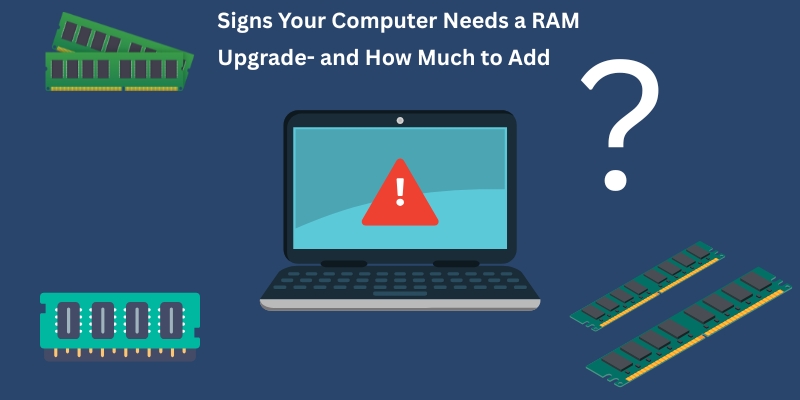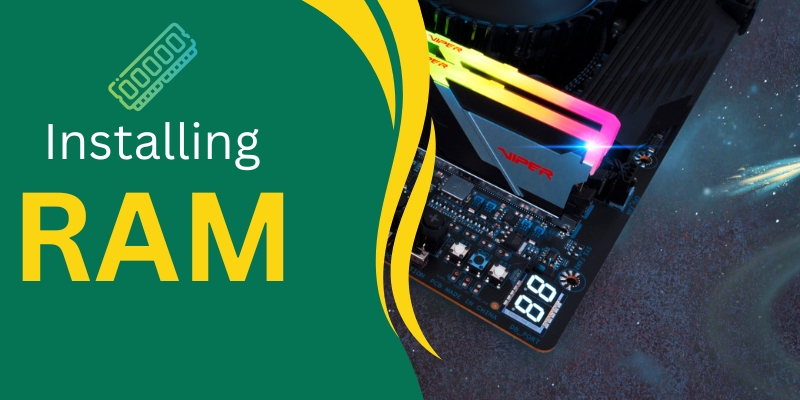
September 27th, 2025 by shreecomputers
Have you noticed your computer acting sluggish, freezing unexpectedly, or gasping for breath when multiple tabs are open? If so, your system might be screaming for one thing: a RAM upgrade.
RAM (Random Access Memory) is like your computer’s short-term memory. It temporarily stores data your system needs quick access to, allowing programs and applications to run smoothly. Without enough RAM, even simple tasks can turn into frustrating waiting games. Whether you’re a casual browser, a remote worker, or a heavy-duty gamer, recognizing the signs of RAM overload can save you from endless spinning wheels and frozen screens.
Let’s dive into the warning signs your computer may be begging for more RAM—and how much you actually need.
Ever tried to run Spotify, a few Chrome tabs, and a document editor at once—only for your computer to feel like it’s wading through mud? That’s a classic symptom of insufficient RAM.Your system is constantly juggling data from one app to another. If there isn’t enough RAM to hold that data, your computer will offload the excess to your hard drive or SSD, which is far slower. The result? Lag, delay, and lots of frustration.
Fix: Adding more RAM gives your system the breathing room it needs to juggle tasks without skipping a beat.
Does your computer randomly freeze, hang, or restart—especially during intense tasks like editing videos or playing games? These are red flags that your memory is maxed out.Crashes usually occur when your operating system runs out of available memory and can’t keep up with your commands. This can lead to data loss and corrupted files—something no user wants to deal with.
Fix: More RAM allows your system to maintain stability, especially under pressure.
If you’re using Windows, press Ctrl + Shift + Esc to open Task Manager. Mac users can check Activity Monitor. Is your memory usage constantly above 80%—even when you’re not running demanding apps?

This is your computer’s subtle way of waving the white flag.Fix: Increasing RAM helps reduce this strain and keeps your system running efficiently, even with background processes.
If booting up your computer feels like brewing a pot of coffee—and shutting it down is even slower—your RAM might be the bottleneck.
During startup, your operating system loads necessary files into memory. When there’s not enough RAM, this process drags. Similarly, shutting down requires saving and closing running processes, which also leans heavily on memory availability.
Fix: A RAM upgrade speeds up boot and shutdown sequences, making your system feel brand new.
When apps like Photoshop, Excel, or even your browser take ages to open, it’s not always your processor’s fault. Insufficient RAM can delay the launch of software, especially if the application demands a decent chunk of memory.Fix: More RAM ensures these programs load swiftly and operate without hiccups.
This depends entirely on how you use your computer. Here’s a quick breakdown:
Pro tip: When upgrading, make sure to check your system’s compatibility. Not all computers support high RAM capacities, and you need to match the RAM type (DDR4, DDR5, etc.) with what your motherboard supports.
Your computer should work for you—not the other way around. If you find yourself frequently battling performance issues, a RAM upgrade is one of the simplest, most affordable ways to breathe new life into your system.
Think of it like giving your computer a shot of espresso. Suddenly, everything feels faster, smoother, and more efficient. Whether you’re working, playing, or just browsing, upgrading your RAM can dramatically transform your experience.
So, the next time your system slows to a crawl, don’t rush to replace your entire computer. A RAM upgrade might be all it needs to get back in the fast lane.